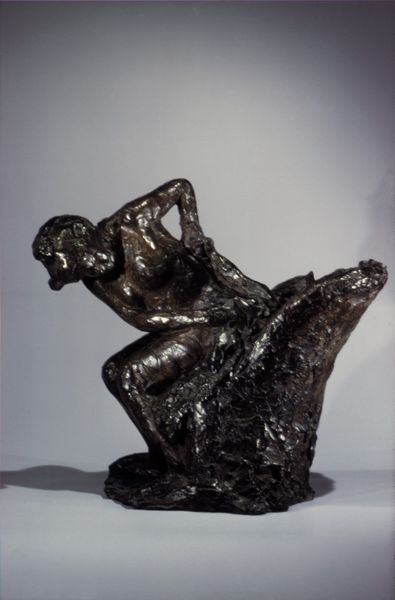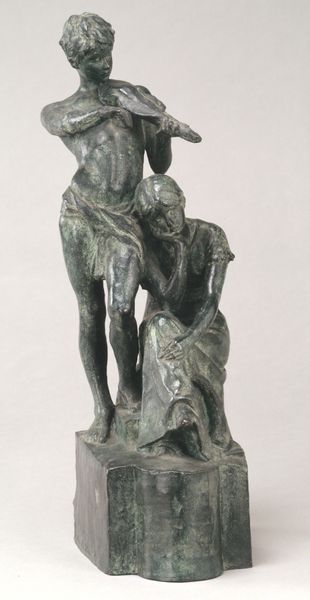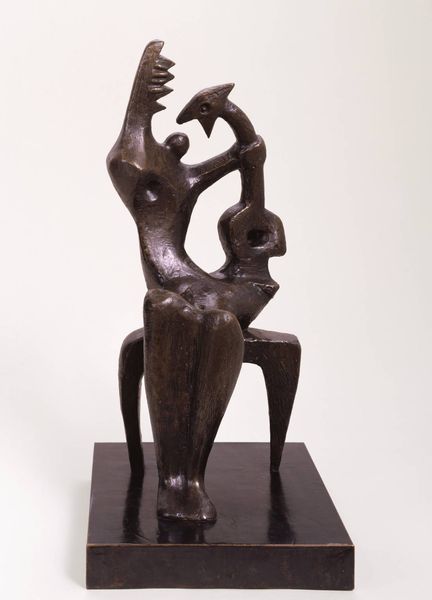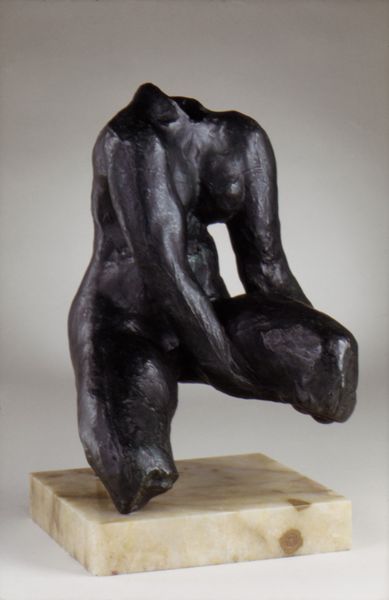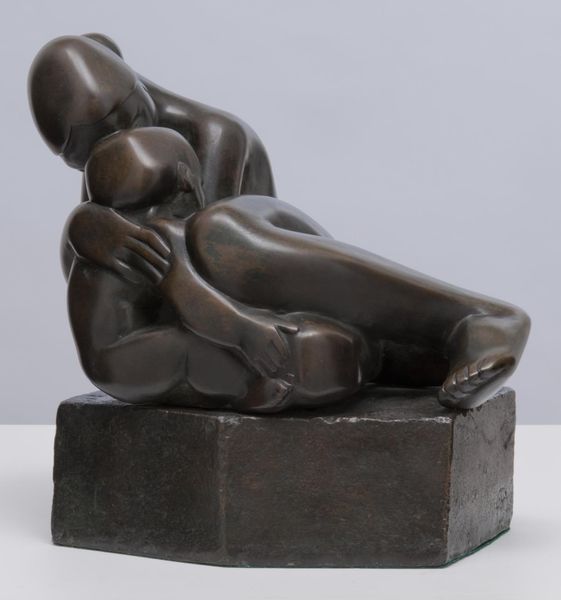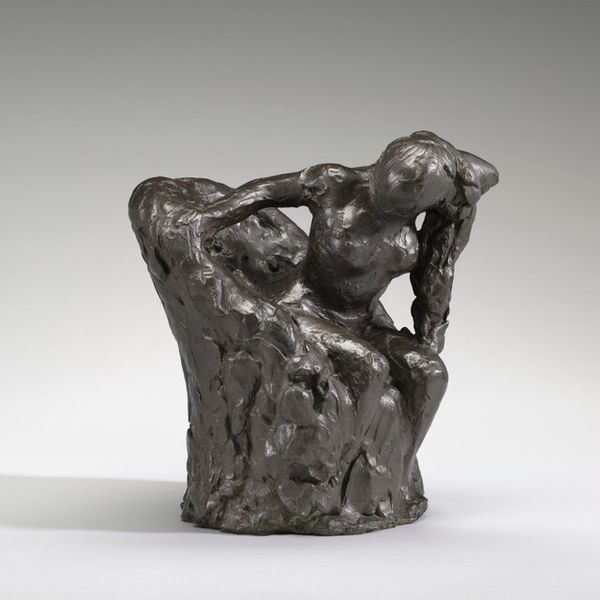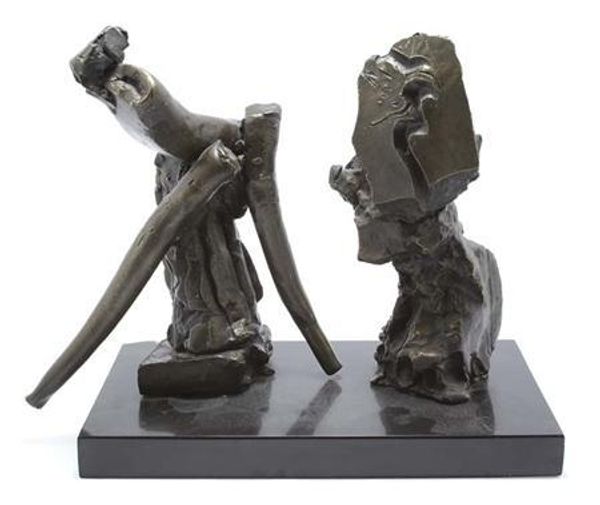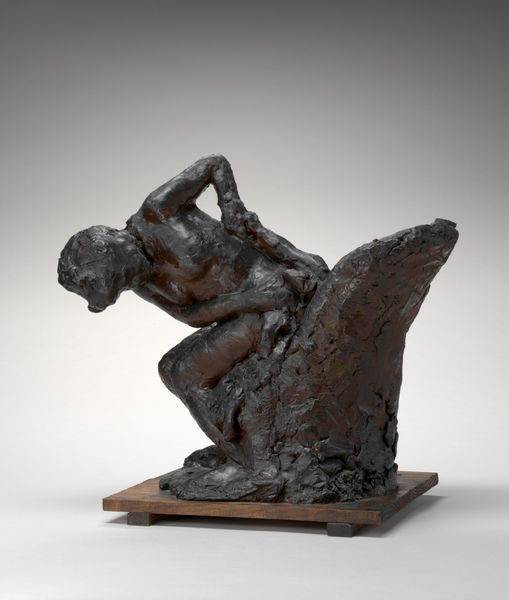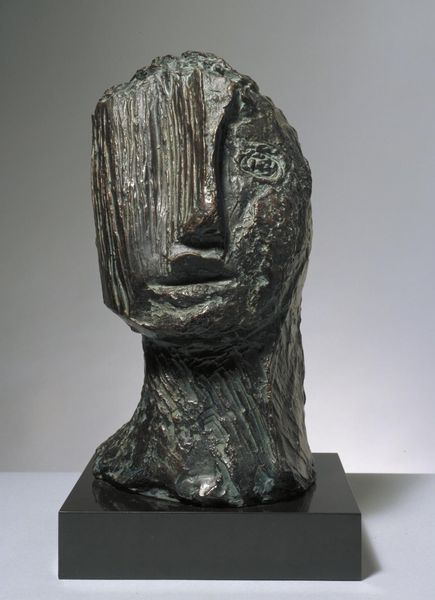
carving, bronze, sculpture
#
carving
#
sculpture
#
bronze
#
figuration
#
sculpture
#
nude
#
modernism
Copyright: Public domain
Editor: Here we have Charles Despiau’s “La Bacchante” from 1909, crafted in bronze. The sculpture has a captivating fluidity. I’m intrigued by how the artist plays with texture and form. What can you tell me about this work from your perspective? Curator: This bronze brings up compelling points about labor and artistic production. Think about the lost-wax casting method. It's a highly skilled craft, requiring collaboration between artist and foundry workers. How does this division of labor impact our understanding of artistic authorship? Does Despiau's concept translate successfully through the bronze medium and the physical labor needed to create the piece? Editor: That’s interesting. I never considered the labor aspect so directly. I was mostly focused on the smoothness of the figure versus the roughness of the base and support behind her. Curator: Exactly! Consider the contrasting textures: the refined surface of the Bacchante's body achieved through casting and finishing, juxtaposed against the deliberately rough texture of the base. What might Despiau be suggesting about the relationship between idealized beauty and the raw materials of the earth? And beyond bronze's earth-derived origins, what of its industrial role? Bronze was commonly used to cast arms. How can we relate its employment here to its use in expressions of power? Editor: So you’re saying the material itself carries meaning related to industry and societal roles, it's not just a neutral vehicle for the artist's vision. Curator: Precisely. Also, look at the choice of subject, the Bacchante, associated with wine, ecstasy, and female liberation. Consider that in relation to the socio-economic position of women as exploited figures. What’s Despiau’s place? And what does the sculpture say about our understanding of modern art’s marketability? Editor: I see, it's not just about the aesthetic or the myth. Thinking about the historical and industrial aspects gives me a totally different sense of it all. Curator: Indeed. By acknowledging materiality and its associated socio-historical processes, we're challenging traditional art historical narratives focusing solely on artistic genius and aesthetic value. Editor: This has really opened my eyes to analyzing art from a completely fresh viewpoint. Thanks for sharing your insight.
Comments
No comments
Be the first to comment and join the conversation on the ultimate creative platform.
